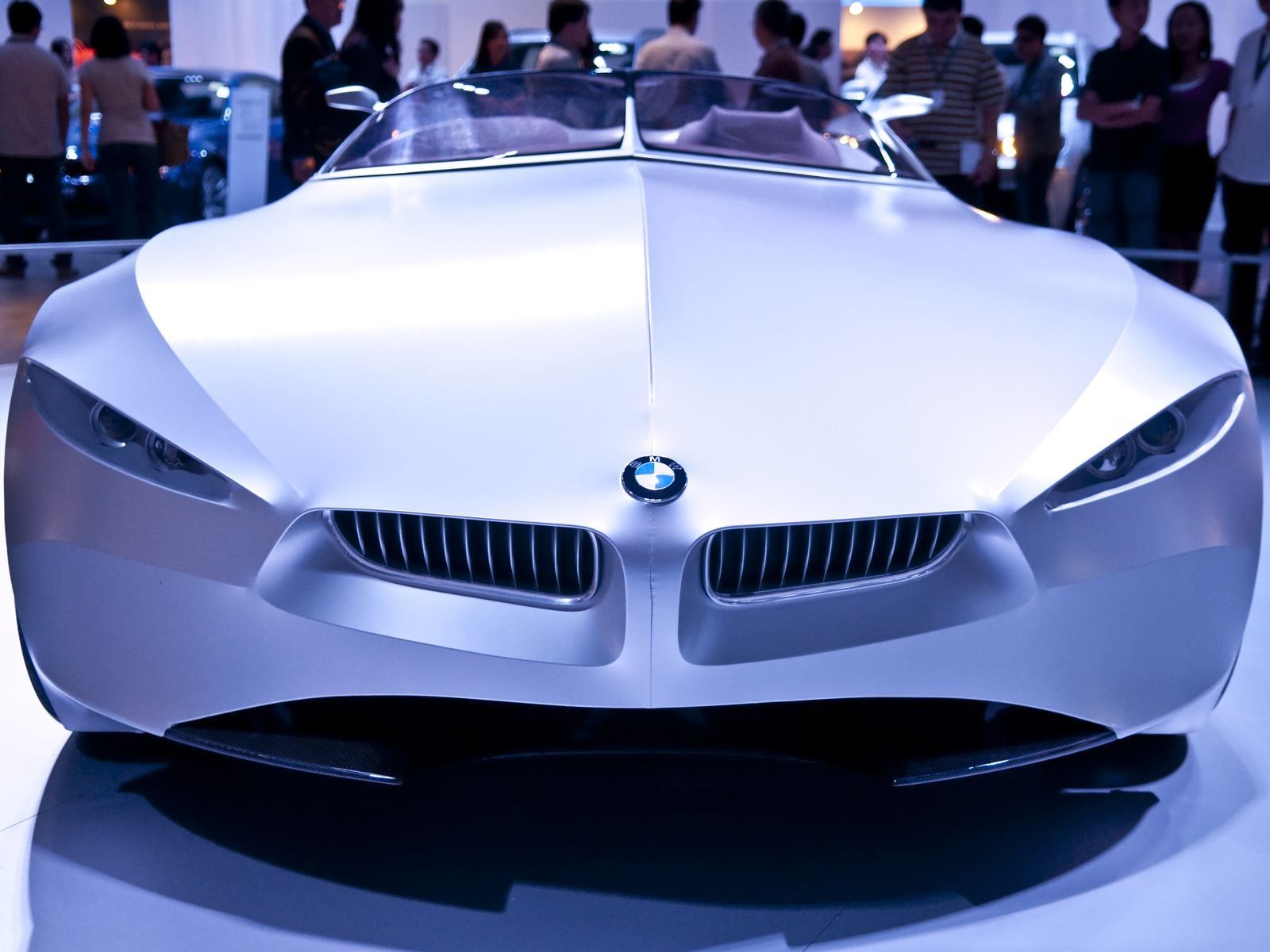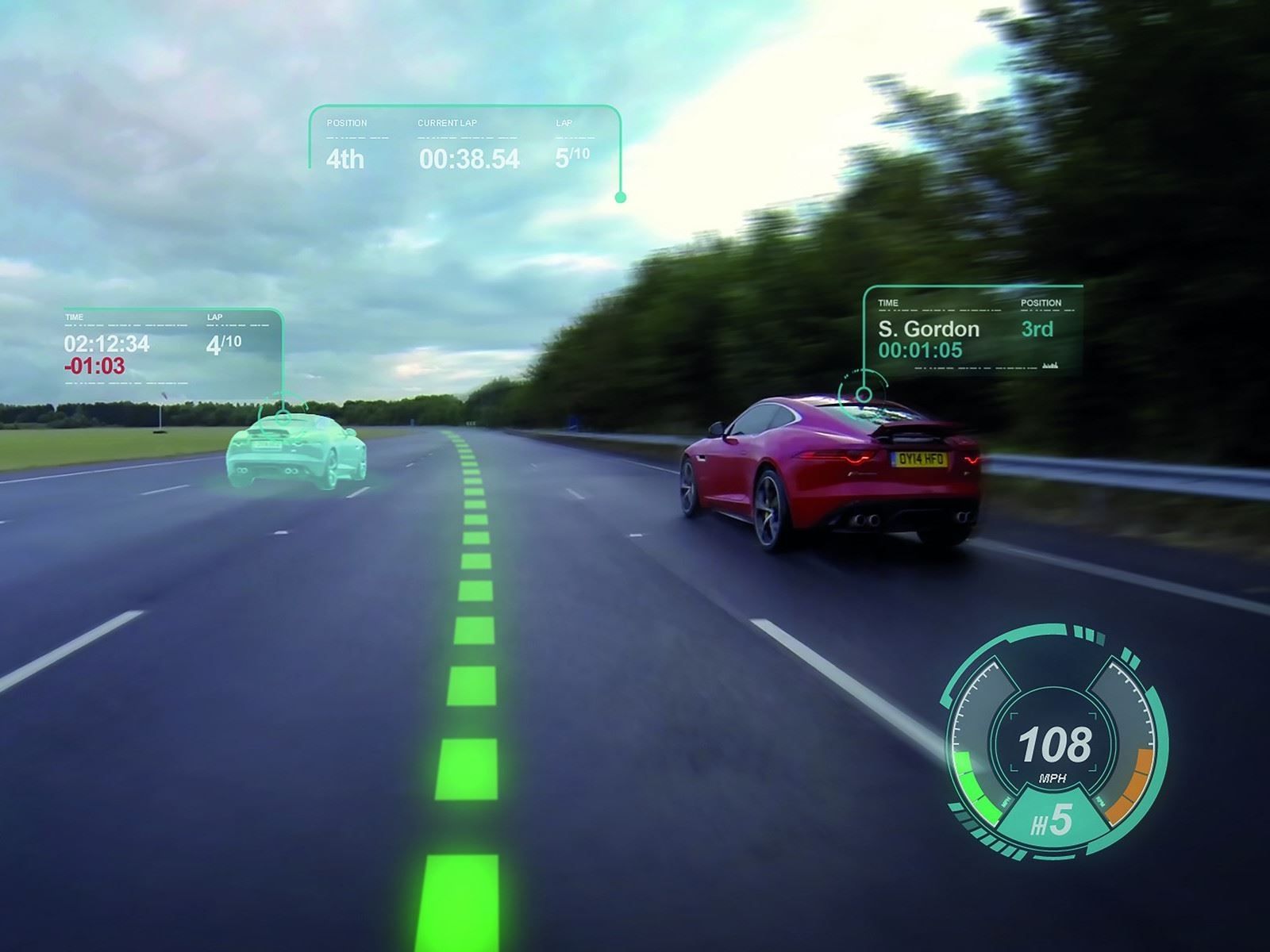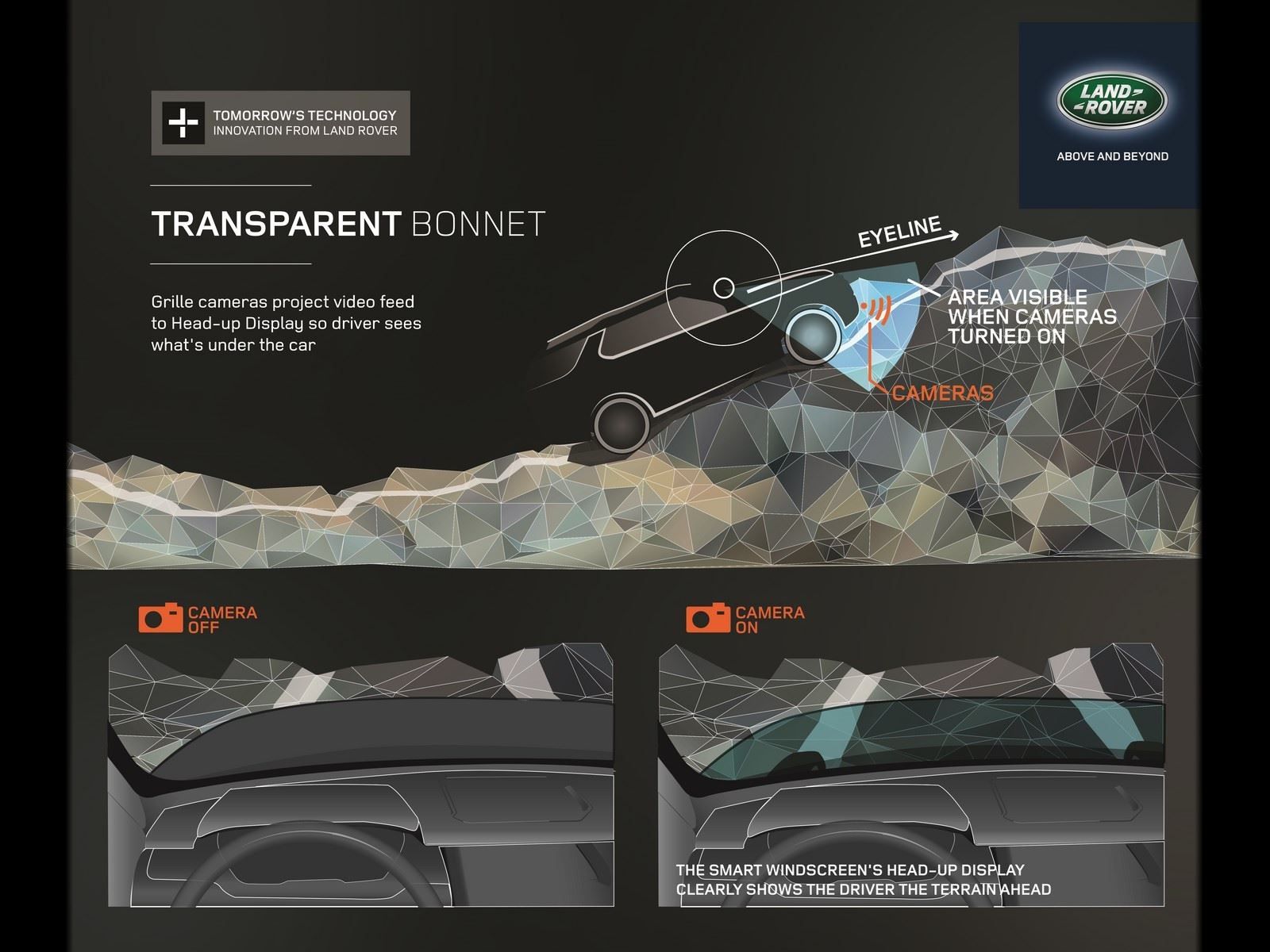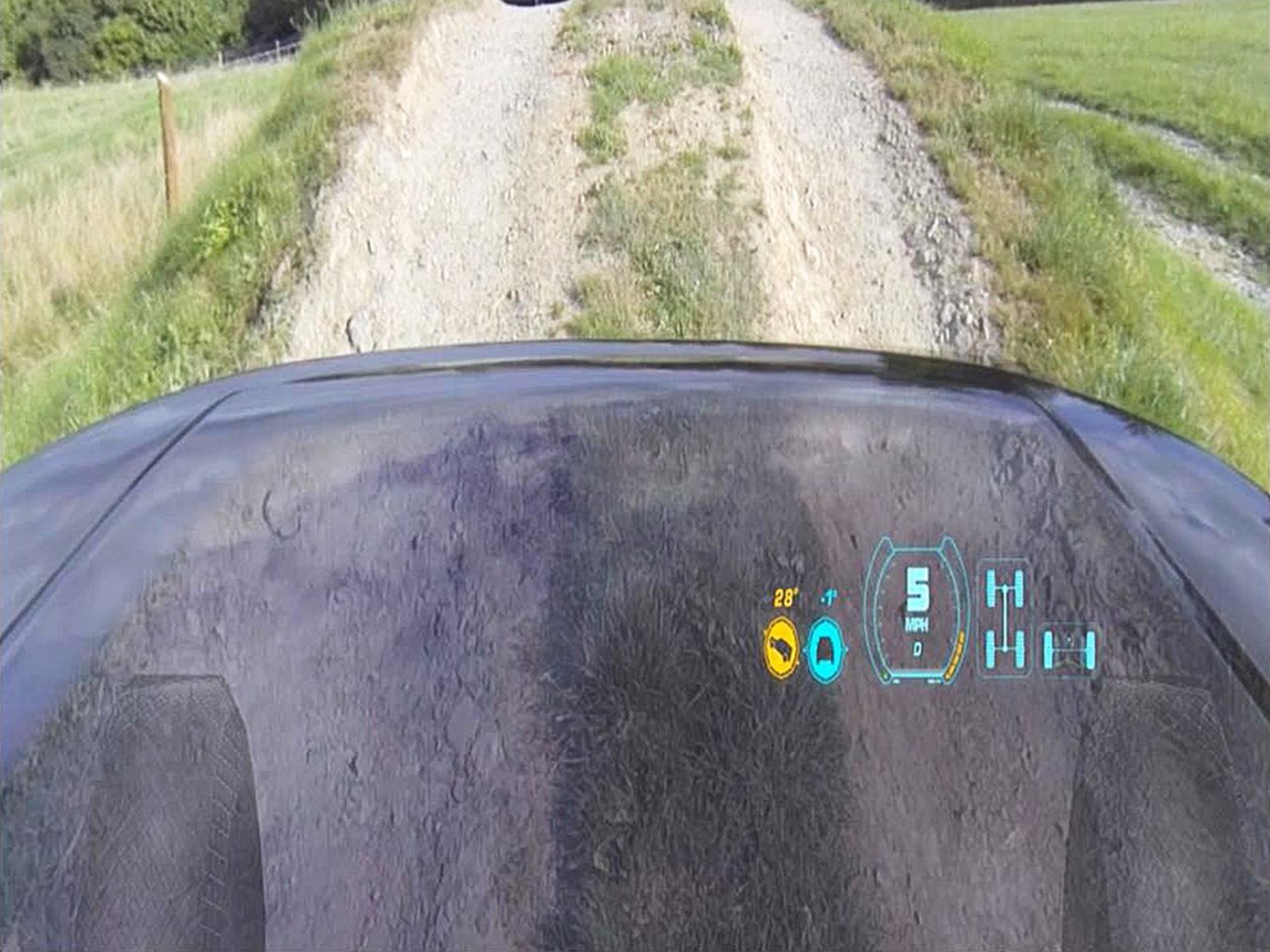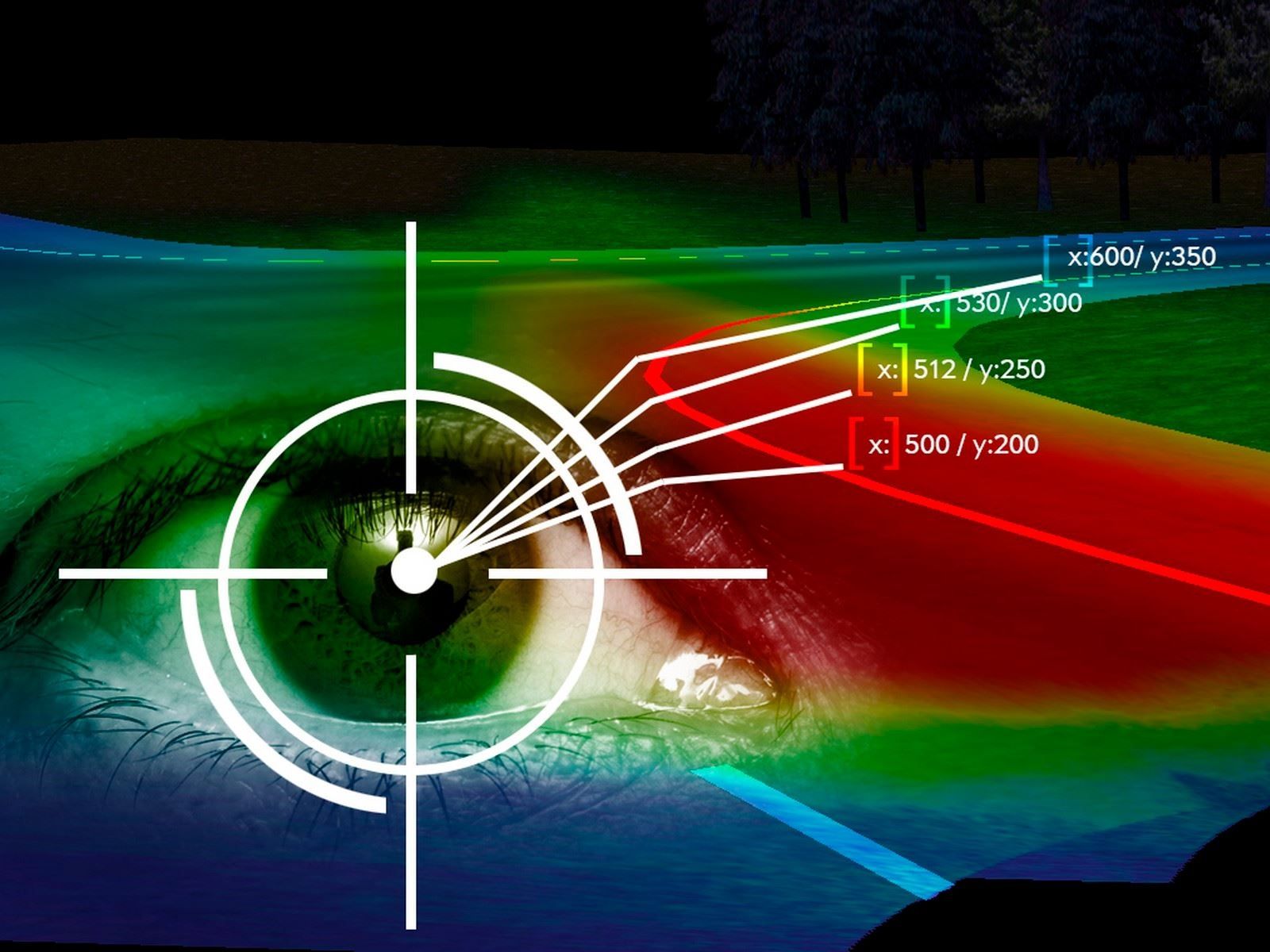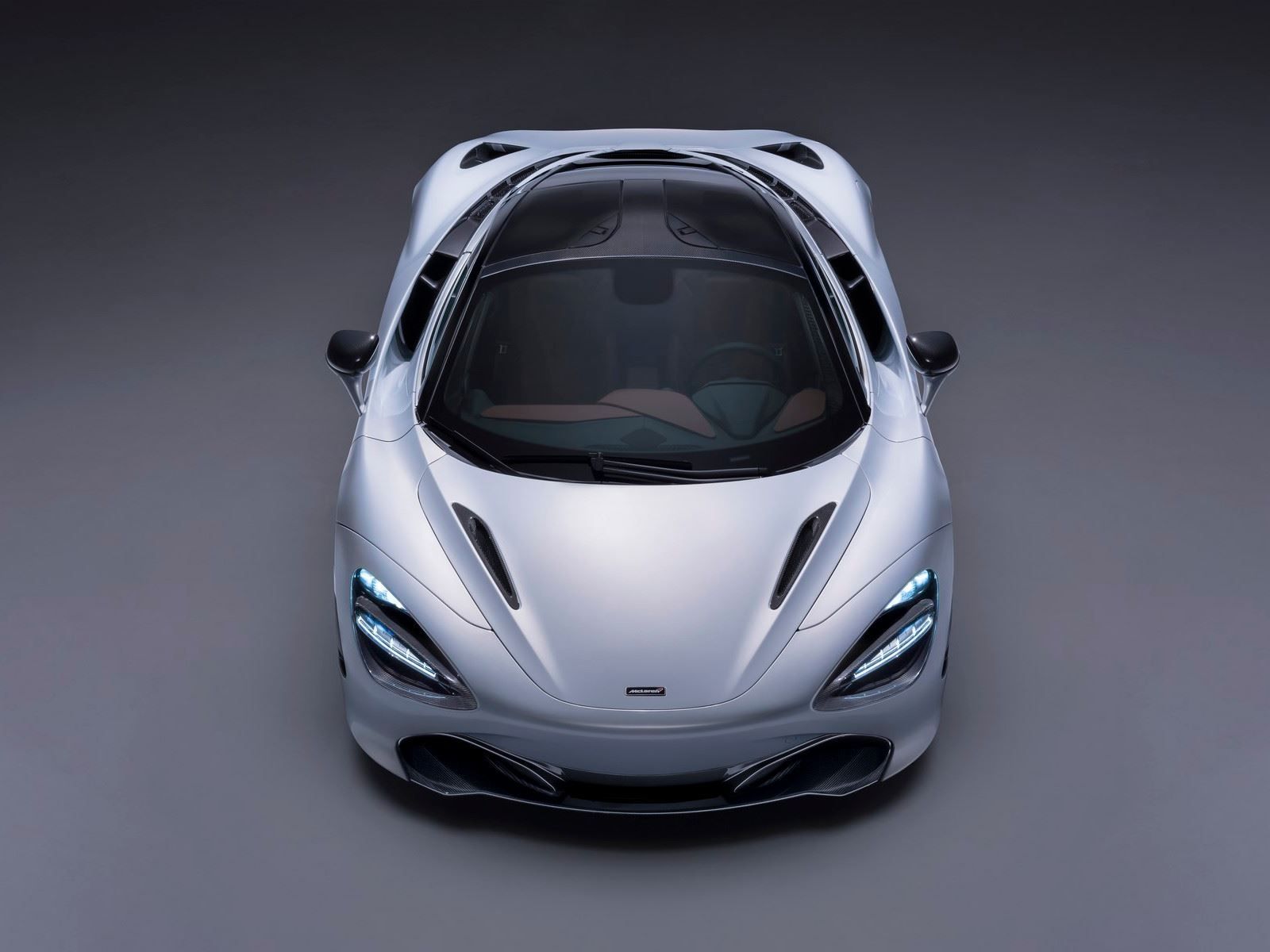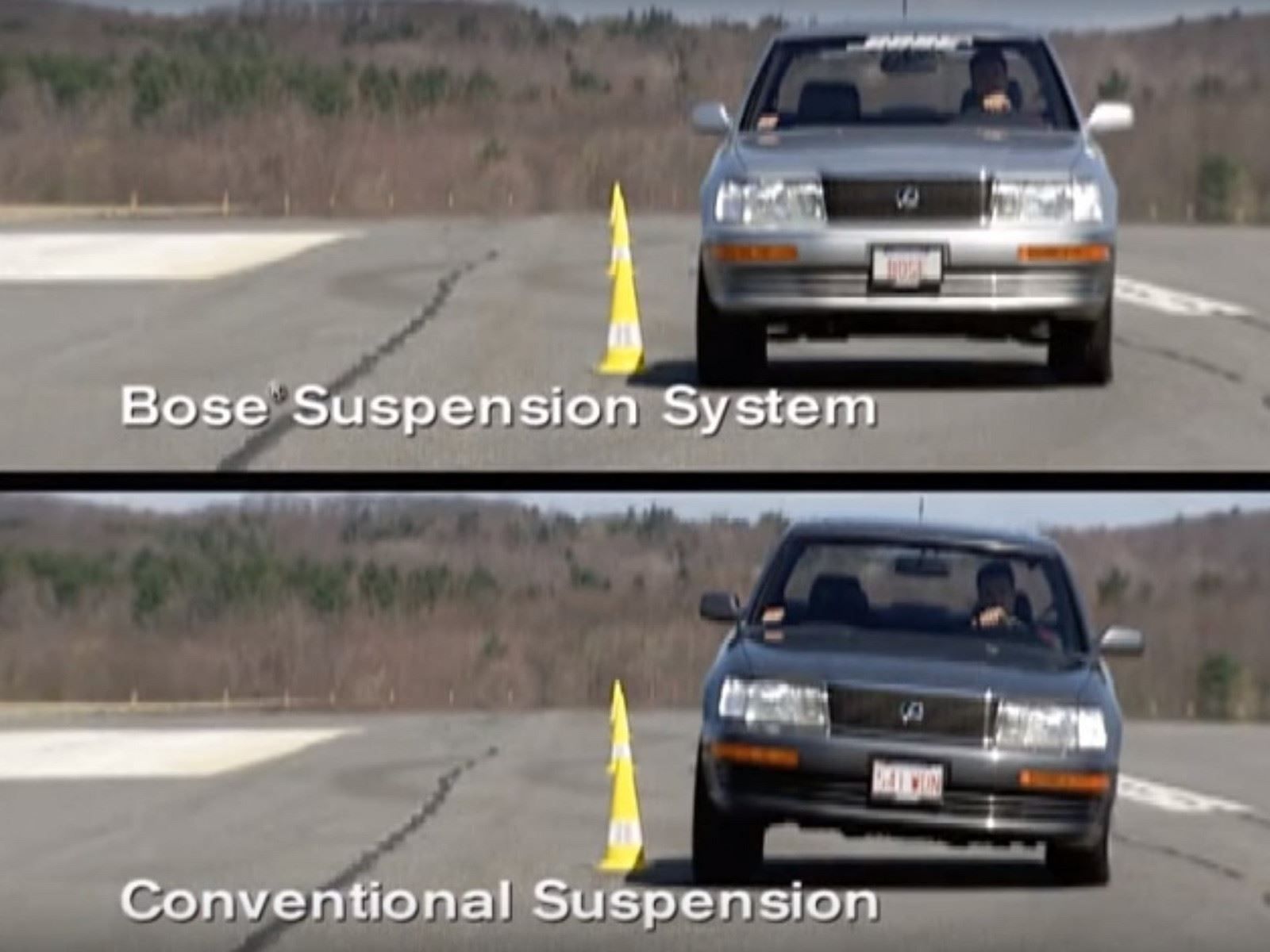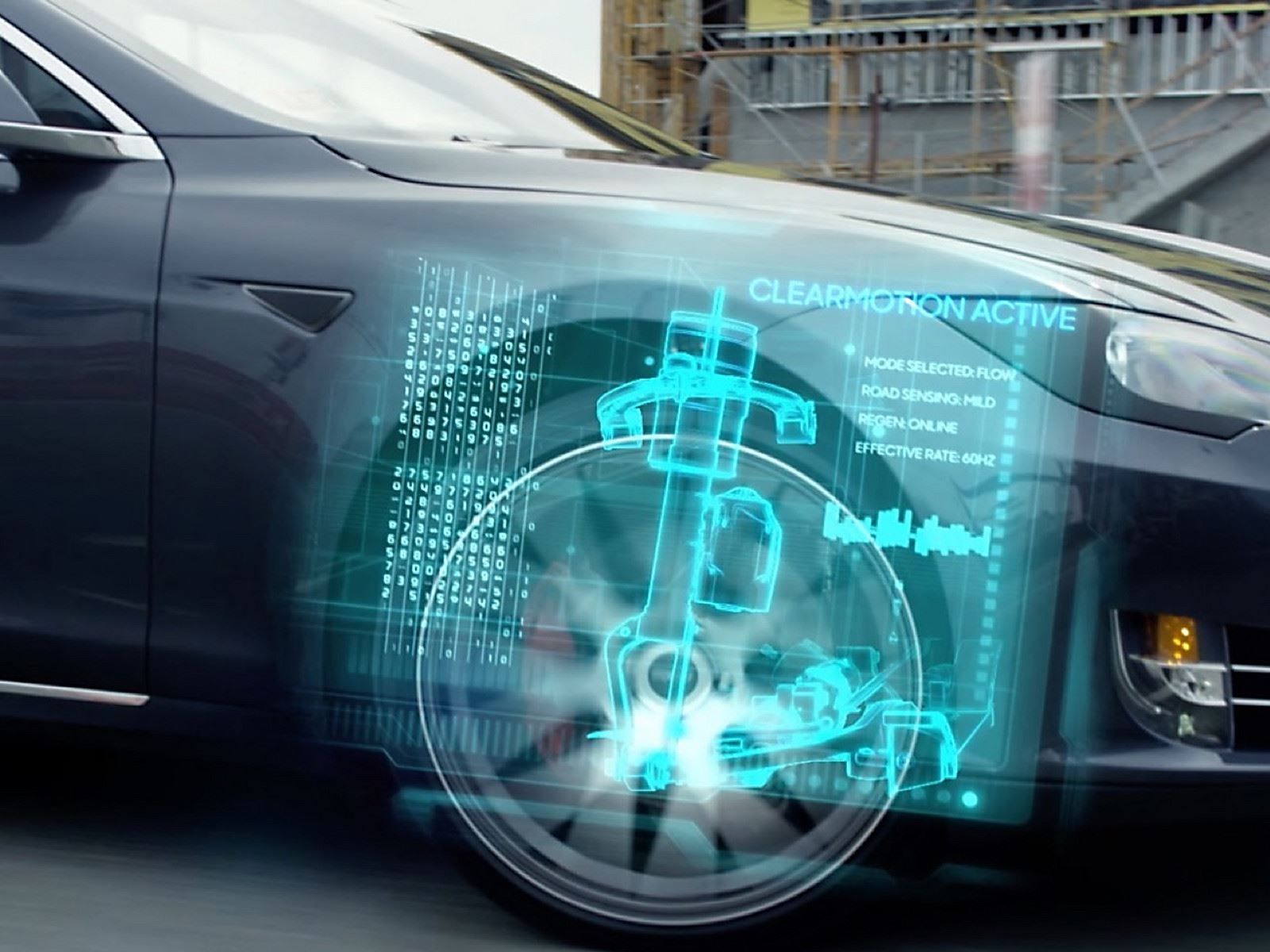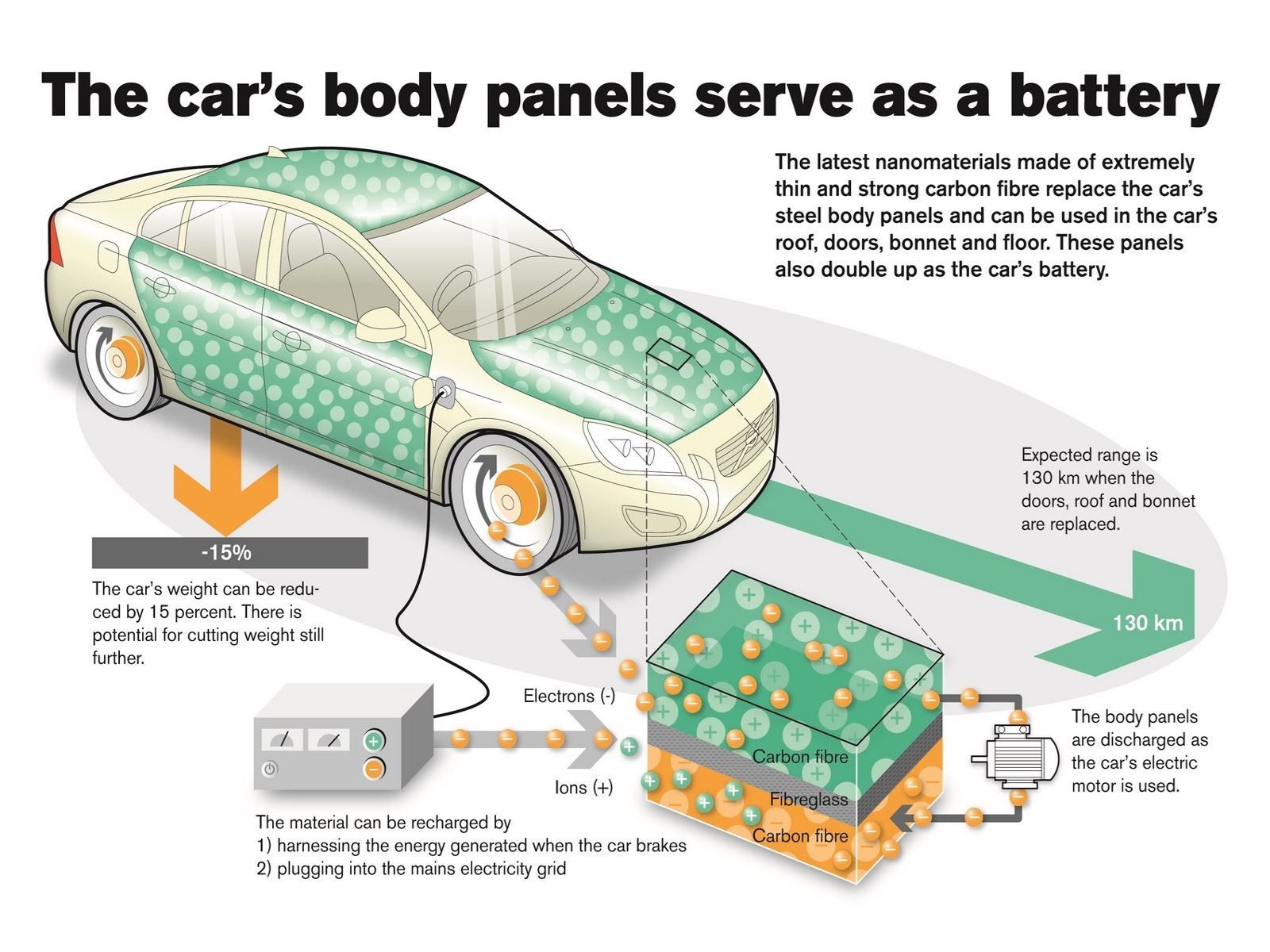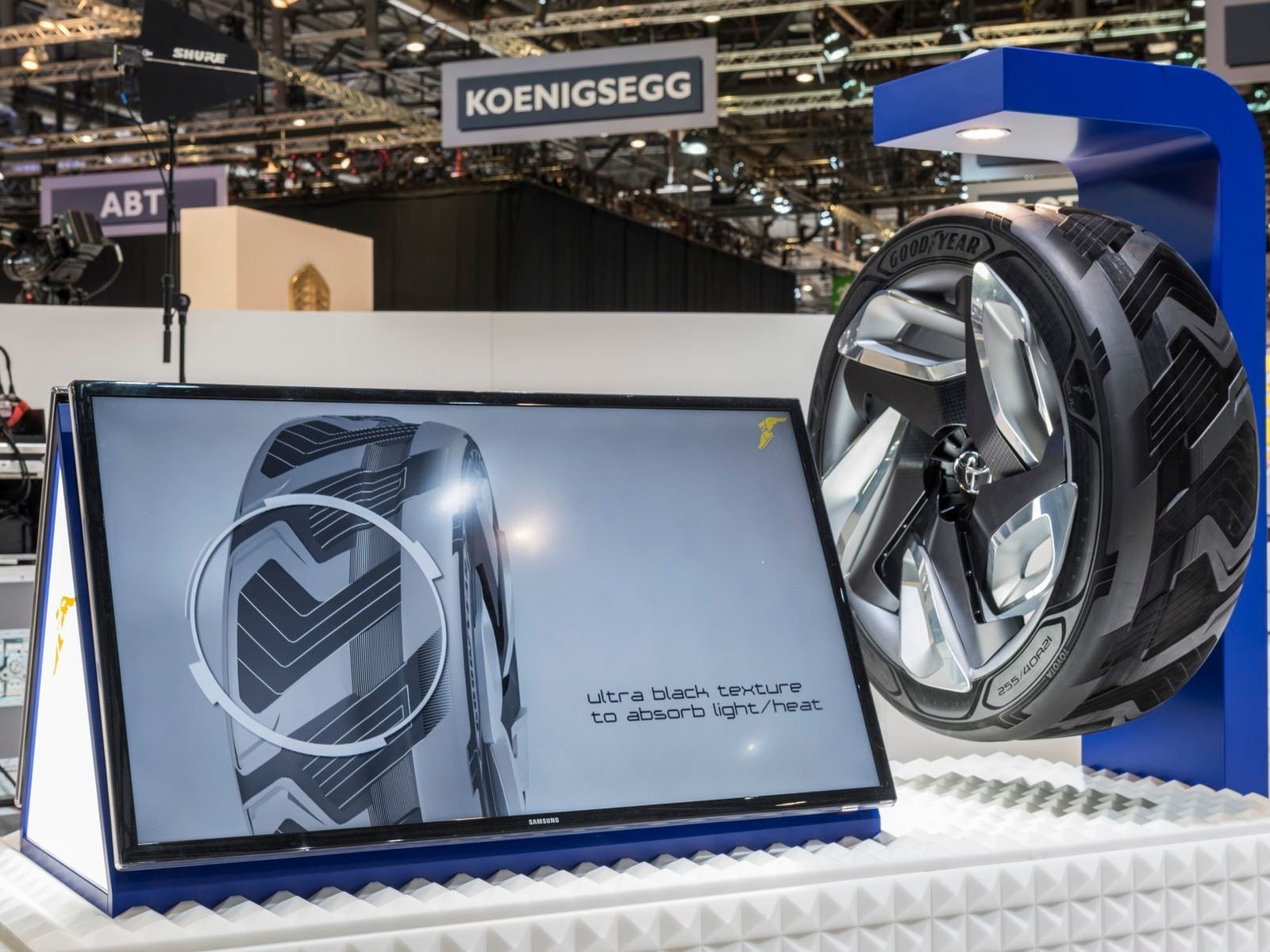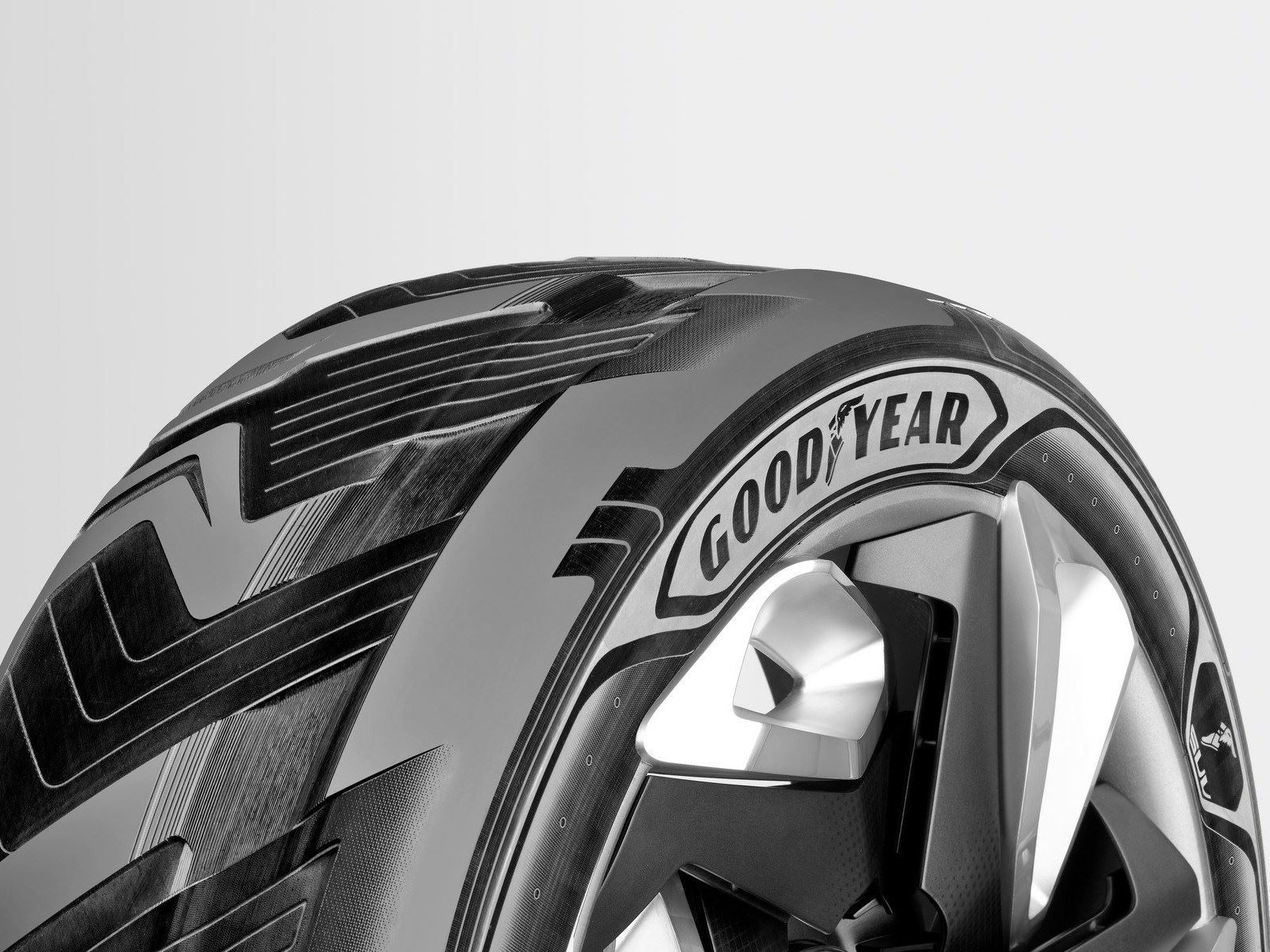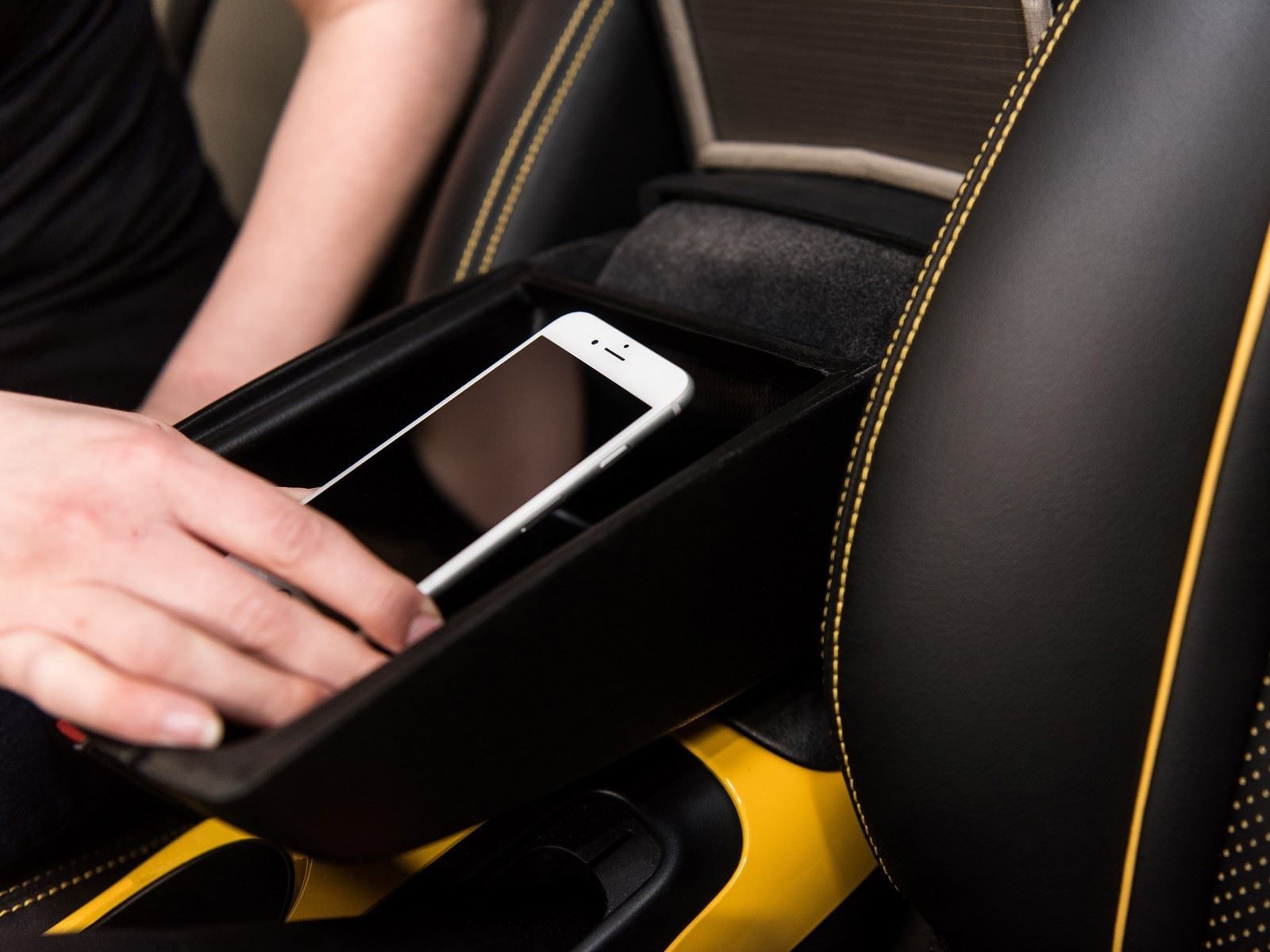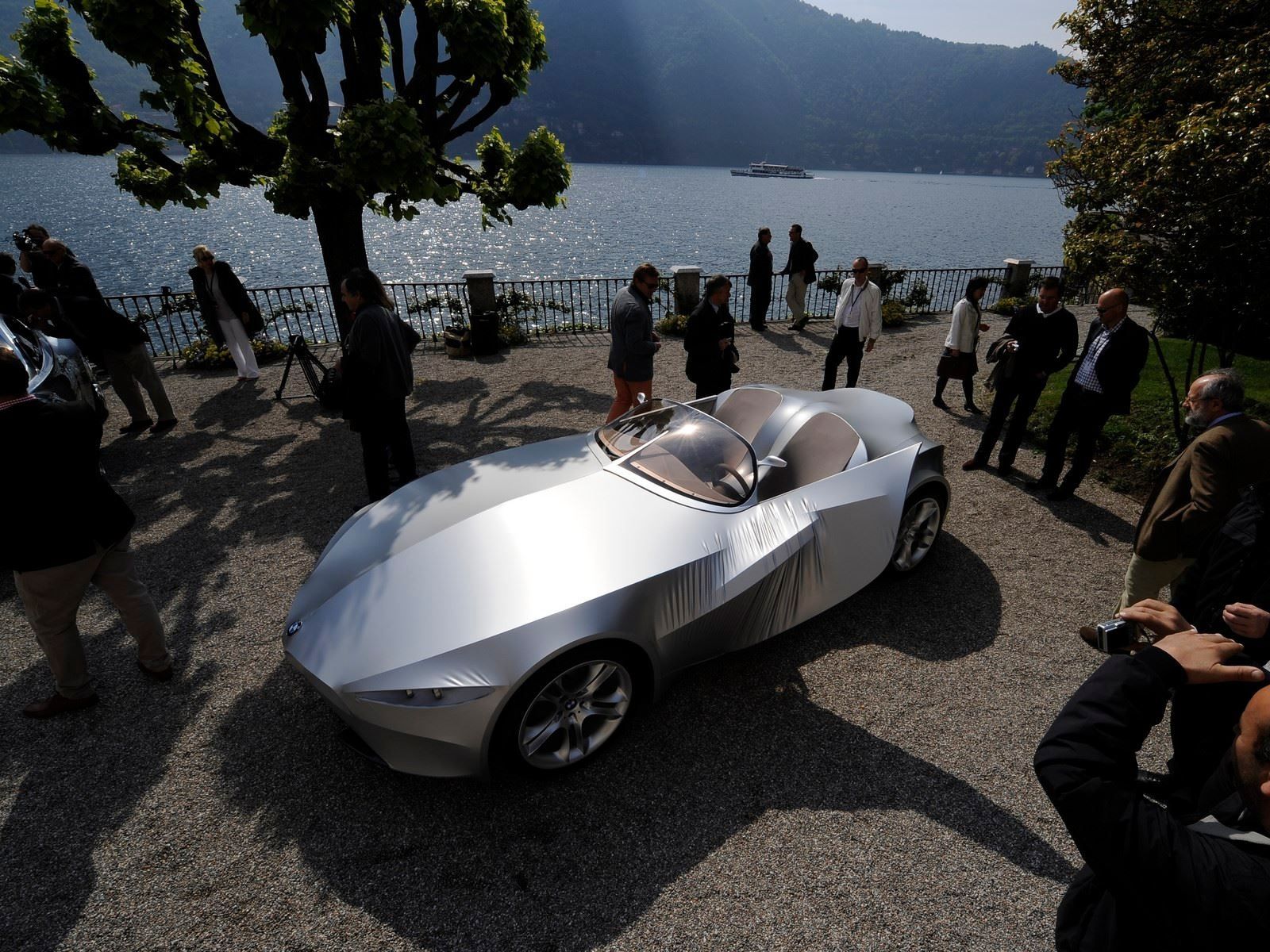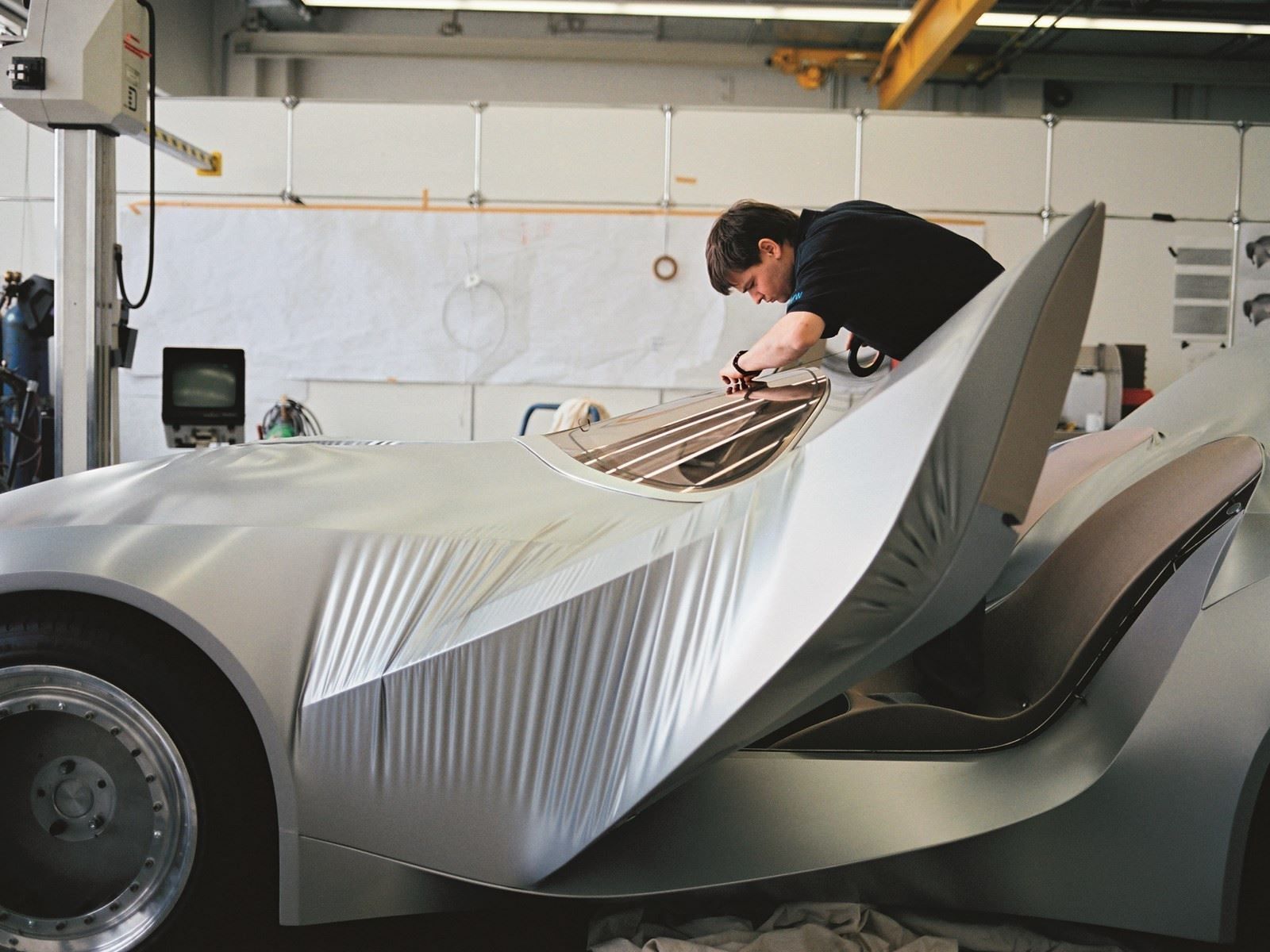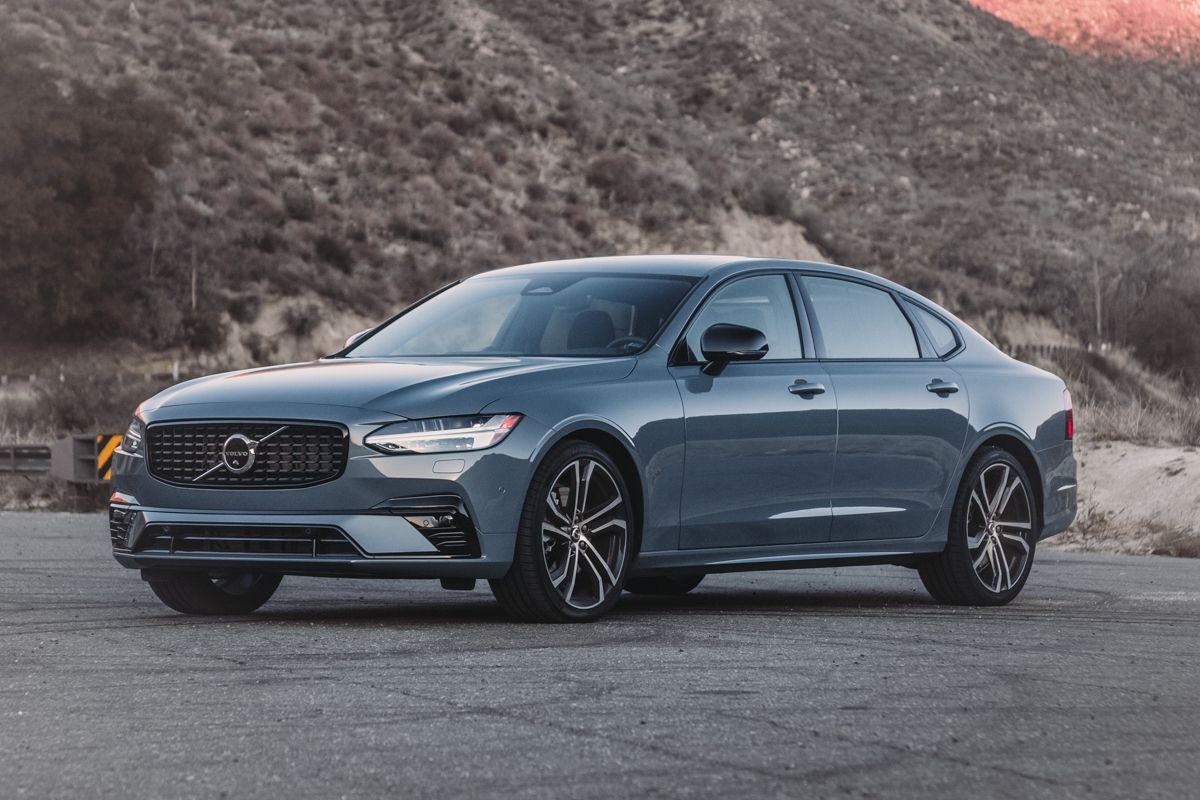
Every year we receive a raft of concept cars debuting fancy technologies that more often than not seem incredibly far-fetched. April Fool's Day is notorious for bringing out claims of self-cleaning cars and tea-powered Mini Coopers; but some of the claims made on the other 364 days a year are made with honest intent and some sound engineering behind them. Yet most of these never reach production. We've selected 8 automotive technologies that seemed incredibly bright, but just never materialized into anything production-worthy, at least not yet…
Jaguar Land Rover Virtual Windscreen
Two iterations of Jaguar Land Rover's virtual windscreen technology have been debuted in the last five years, each serving a very different purpose while relying on a similar concept. Jaguar first debuted the tech as an extremely enlarged version of the standard head-up display projection fairly standard on luxury cars. It claimed the system could be used to great effect on the racetrack, where you could view racing lines, braking points, and even a ghost car against which to benchmark your lap. It was pretty much Gran Turismo with all the aids on, but in real life.
Land Rover took the same technology and applied it to an off-road scenario befitting its SUVs' capabilities. By mounting a camera underneath the nose of the car aimed at the ground, it then used the virtual windscreen to essentially render the hood of the car invisible by projecting the camera feed onto the windscreen directly. By doing this, whilst off-roading you could see exactly what lay beneath the nose of your SUV, and easily navigate the safest and easiest path around it.
Opel Headlight Directed By Eyesight
General Motors offloaded German sub-brand Opel to Groupe PSA last year – with one of the problems being that Opel had very high development costs. It wasn't the actual vehicles per se, as those were often rebadged as Buicks to reduce development costs, but Opel had a knack for developing weird and wonderful cars and tech that weren't financially viable, or drove costs up beyond a reasonable point. One such piece of tech was eye-sight guided headlamps. The tech used a camera aimed at the driver that tracked the line of sight and directed the headlamps accordingly.
It was a clever idea, and the development included algorithms that smoothed out the movement of the headlights (the human eye jumps around continually rather than tracking steadily). It sounds very clever, but the tech never materialized in production.
McLaren's Vibrating Windscreen
Back in 2013, supercar manufacturer McLaren claimed it was working on a technology to get rid of windscreen wipers on all its cars entirely, based on technology derived from fighter jets. The car would feed through a sound frequency that would effectively dislodge water on the windscreen and allow it so remove itself with airflow. Simply put, the windscreen would vibrate so quickly that water couldn't physically stick to the glass. We're now five years on, and even the most high tech of McLaren hypercars still has windscreen wipers, so whether the tech will actually materialize or not remains a mystery.
Bose Suspension
Some recent news has sparked debate and speculation that this tech may yet come to fruition. Back in the 1980s, audio company, Bose, designed what was effectively an uber-powered speaker electromagnet that could be equipped to a cars suspension. The electromagnetic suspension could adapt to changing road surfaces to such a large extent that it could keep a car almost entirely flat when cornering or going over bumps. They built prototypes too, ones that could even bunny-hop over speed bumps. Sadly the tech was too heavy and too expensive, and only ever spawned a super-balanced driver's seat for trucks
Now, a company called ClearMotion has bought the rights to the technology and aims to reboot it, with production spec versions expected in 2019 – whether this will actually be the case remains to be seen.
Battery-Infused Carbon-Fiber Body Panels
Thank Volvo for this – back in 2013, the Swedish company developed carbon-fiber composite body panels that could theoretically store energy like a battery. The carmaker realized that the heaviest part of an EV is the battery, and sought to integrate the functions of the battery into other parts of a vehicle that in theory had little function. It even made a working prototype using an S80 with rechargeable trunk, hood, door and roof panels. With Volvo now pursuing EVs zealously, we wonder why the tech hasn't debuted on the Polestar brand?
It could be because accidents could potentially cause fires due to damaged bodywork/battery cells, or the cost of body panel replacement. Perhaps it could have something to do with reduced dynamics too, as a battery on the roof presents a far higher center of gravity than one mounted in the floor.
Electricity-Generating Tires
Goodyear pioneered this technology a few years back – using a piezoelectric compound to create tires that could in theory help recharge an electric vehicle on the move. Piezoelectric materials utilize pressure and friction to generate energy – and what better place to harness this than from the items of a vehicle that take the brunt of road impacts, and are always in a state of friction with the road surface. The more you drive – or in theory, the rougher the surface you drive on – the more charge the tires generate. The tires also used materials that harnessed sunlight to generate extra energy, even when standing still.
Goodyear stated categorically that the BH03 tire would not enter production, though, and that it was merely an engineering exercise.
Nissan’s Faraday Cage Armrest
Mobile phones and tablets are becoming an increasingly more dangerous proposition when it comes to driving. Humans are far too easily distracted by them. Even when we put them aside, the sound of an alert often pulls eyes away from the road. Nissan released a prototype design in 2017 that made use of a small faraday cage – called the Nissan Signal Shield – under the center armrest of a Nissan Juke. The faraday cage essentially blocks any and all signal, so when the phone is in the arm rest, no one can get hold of you, and you can't get distracted.
Shape-Shifting Cars
BMW's Vision Next 100 gave us a glimpse of a shapeshifting car with variable aerodynamics and shape-shifting tendencies, but it was actually the BMW GINA Light Visionary concept in 2008 that showed off shape-shifting cars for the first time. It used a spaceframe chassis with electronically actuated flexible textile skin that could physically change shape. Even the headlights were controlled by the skin opening like eyelids.
While not entirely viable in that form, the idea of cars changing shape for improved aerodynamics in varying situations is still an appealing thought that no one has yet put into proper practice – if they ever will. Of course the man behind the whole thing was Chris Bangle – notorious for his rather unorthodox design methods.

